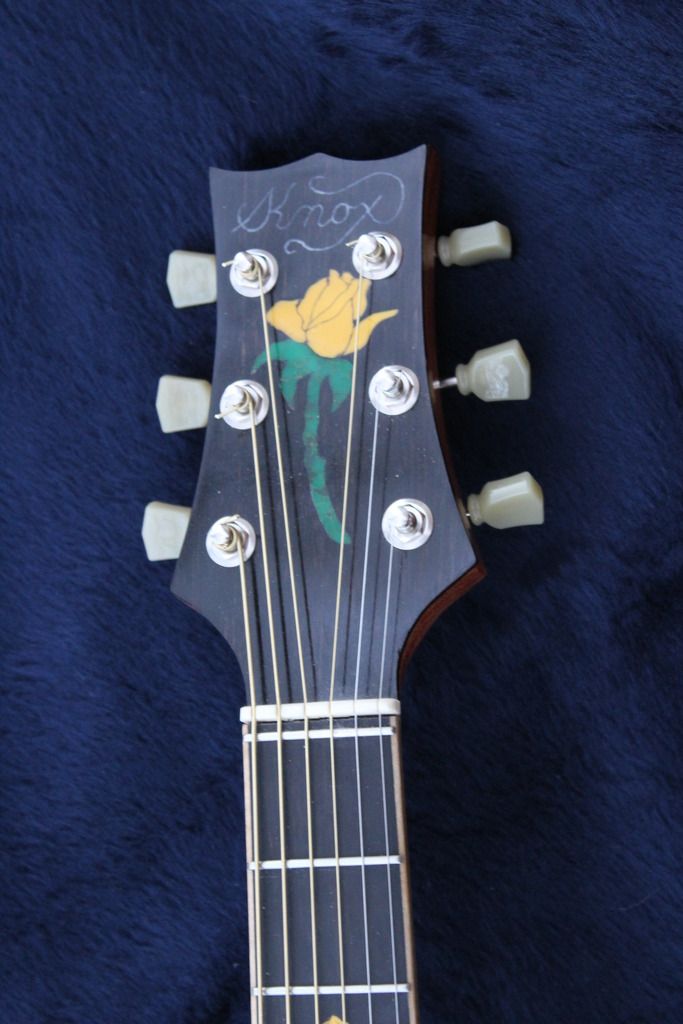
 |
|
#1
|
|||
|
|||
|
so how would one go about inlaying an actual signature? I'm talking something "marker width", not something super thing that could be cut out of MoP and glued in.
My thought is, should one be able to route it out, to use a small downcut spiral bit to trace over the writing... Then fill it with white medium CA glue.. let dry and sand flush. Is there a better way? I've looked all over google and youtube, but there doesn't seem to be a lot of it going on. Thanks for any ideas of how to do this. B |
|
#2
|
|||
|
|||
|
Inlay is just that - cut pieces to shape, rout or chisel the recess, place inlay, level and fill. The nice clean lines are achieved during the shaping of the inlay piece.
Try routing the channel and filling it with liquid material, let dry and level. You'll get an immediate sense of why it isn't ordinarily done that way. The contrasting colored stuff will find its way into the most tiny void, chip, crack or uneven area, and the result will be a messy indistinct border - usually pretty nasty.
__________________
Cheers, Frank Ford |
|
#3
|
|||
|
|||
|
Quote:
If you really want to do signature logos you can send a jpg of a good signature to DePaule at Luthiersupply.com and have them cut inlays of the signature. When I used to do lap steels (several years ago) I sent them the art work qnd had them cut a few dozen at a time. At that time it was $50 for the initial setup charge and $12 per inlay. I'm sure it's a lot more now. I used a different technique, gluing the inlay on the surface with CA, cutting it out with a extra-fine saw, flipping over the overlay and gluing the inlay/backing from the back by inserting it in the cut out cavity by bedding it in black epoxy.  
|
|
#4
|
|||
|
|||
|
Quote:
Where are you wanting to place the inlay. A common inlay to do on fretboards, "I find" is a block of pearl inlay at the 12th with an opposing script (name) in that block of pearl of a different colour. I am doing one this week, can show an example if you wish Steve
__________________
Cole Clark Fat Lady Gretsch Electromatic Martin CEO7 Maton Messiah Taylor 814CE |
|
#5
|
|||
|
|||
|
As far as it being nasty, that's not necessarily true.
I know because I've done it many times. Cyano won't work well because it's too thin and it will wick into grain, particularly if it's an open grained wood like mahogany. But epoxy will. Use slow set and let it slightly start to firm up just before pressing it into the rout. |
|
#6
|
|||
|
|||
|
Example, Paua shell is marker width.
 Steve
__________________
Cole Clark Fat Lady Gretsch Electromatic Martin CEO7 Maton Messiah Taylor 814CE |
|
#7
|
|||
|
|||
|
Quote:
There are many inlay artists out there that are capable of doing this by hand and it is an art that find amazing.
__________________
Joe White  ( o)===::: ( o)===:::
|
|
#8
|
|||
|
|||
|
Quote:
Please post some pics and prove me wrong.
__________________
https://www.reverbnation.com/bootheelers |
|
#9
|
|||
|
|||
|
CNC will do it quick and easy. There's a guy named Andy Birko (Birkonium) who does guitar headplates for a lot of builders.
|
|
#10
|
|||
|
|||
|
Quote:
I'm not going to bother to post a photo. |
|
#11
|
|||
|
|||
|
I've done it like that a few times and it works well enough. Here's a guitar that is done with traditional mastic for rosette and purfling. It's basically charcoal and glue. Once sanded through it looks nice and clean. You just need to make sure you use good sharp bits and if you are going to use CA then shellac the routing first.
|
|
#12
|
|||
|
|||
|
It's not that hard.
 That's bone dust and CA in a channel routed freehand with a dremmel. Mr. Ford is correct about the edge of the route has to be sharp, but it's possible. I can post more pictures, I did a tutorial of how to do this on MIMF.com several years ago.
__________________
Rodger Knox, PE 1917 Martin 0-28 1956 Gibson J-50 et al |
|
#13
|
|||
|
|||
|
Quote:
Quote:
This is white paint mixed into epoxy and then pour filled into the route I much prefer using shell, however this was a 5 dollar truss rod cover I had to make in a rush (10 minute window), 5 dollars would not have covered my cost in shell had I used it. Steve 
__________________
Cole Clark Fat Lady Gretsch Electromatic Martin CEO7 Maton Messiah Taylor 814CE Last edited by mirwa; 01-31-2017 at 03:59 AM. |